Abstract
Background: Ecbolium hastatum Vollesen is currently known from only three collections in southern Mozambique and has not been relocated since 1970.
Objectives: To document two new populations and a small range extension for this poorly known species, and to provide a much-needed assessment of its conservation status.
Method: The new populations were found by the first author (W.M.) while conducting floristic surveys of coastal thicket vegetation between Inhassoro and Vilanculos in December 2016, and during ongoing surveys by the second author (A.M.) of coastal thicket between Ponta de Ouro and Inhassoro. No voucher specimens were collected for the northern population, but photographs of key features were taken and compared with specimens in online herbaria. A voucher specimen was taken for the southern population.
Results: Two new populations and a northern range extension for E. hastatum are recorded. The species is assessed as Endangered EN B2ab(iii) according to International Union for Conservation of Nature (IUCN) Criteria. Only one of the five known localities for this species is protected.
Conclusion: The conservation assessment of this species highlights the importance of coastal dune thicket for range-restricted species in southern Mozambique.
Introduction
The genus Ecbolium comprises 22 species, with 12 of these occurring in Africa (Vollesen 1989:640). Four species occur in the Flora Zambesiaca region, one of which is endemic to the region, Ecbolium hastatum (Darbyshire, Vollesen and Kelbessa 2015:239). This species was hitherto known from only three collections in Inhambane, Gaza and Maputo provinces in southern Mozambique (Figure 1). The northernmost collection was the holotype (Gomes e Sousa 1882, K) collected from Vilanculos town in August 1936 and the most recent collection was from Inhaca Island (Correia & Marques 1612, LMU) in June 1970. No subsequent collections have been made. The conservation status of the species has been assessed by Izidine and Bandeira (2002:56) and classified as Data Deficient, although Darbyshire, Vollesen and Kelbessa (2015:239) suggested that it was ‘possibly Vulnerable’.
 |
FIGURE 1: Localities at which Ecbolium hastatum has been collected. |
|
Material and methods
The observations were made independently by the two authors while conducting floristic surveys of coastal thicket vegetation between Inhassoro and Vilanculos in December 2016 (W.M.) and during an ongoing survey of dune thicket between Ponta de Ouro and Inhassoro (A.M.). No voucher specimens were collected for the Inhassoro population as the first author was not in possession of a collection permit, but photographs of key features were taken and these were compared with a digital image of the holotype on Global Plants (http://plants.jstor.org). The photographs were also sent to Iain Darbyshire at Kew, who confirmed the identity. A voucher specimen for the Xai-Xai population was collected (Massingue 400), and is housed at Eduardo Mondlane University (LMU) in Maputo. The extent of occurrence (EOO) and area of occupancy (AOO) for this species were calculated by using the Geospatial Conservation Assessment Tool (GeoCAT) (http://geocat.kew.org/). In addition, the maximum potential area of suitable habitat for this species was calculated by analysing Google EarthTM imagery (2013–2016) of the Mozambique coastline from Inhaca Island to Inhassoro, and manually drawing polygons around each area of intact dune thicket. The sum of the area of these polygons represented the maximum potential distribution of E. hastatum based on known localities at which it occurs.
Results
A small population of three plants, one of which was flowering, was found by the second author in undisturbed, low dune thicket at Praia de Chiziane, approximately 40 km north-northeast of Xai-Xai (25° 0′ 43.27″ S 34° 2′ 22.62″ E), on 18 August 2015. Associated plants in the dune thicket canopy were Croton pseudopulchellus Pax, Zanthoxylum delagoense P.G. Waterman, Manilkara concolor (Harv.) Gerstner and Mimusops caffra E. Mey. ex A.DC., while Barleria repens Nees was present in the sparse understory.
On 09 December 2016, the first author located a small population of E. hastatum while surveying a broad strip of coastal dune thicket 9 km southeast of Inhassoro town (21° 36’ 12.54” S 35° 14’ 56.53” E), approximately 45 km north of the type locality. An area of 6 ha of coastal thicket was intensively surveyed and only three groups of two to three E. hastatum plants in each group were found. Plants were growing in leaf litter beneath a low canopy of Brachystegia torrei Hoyle trees, on deep, white coastal sands. Associated plants in the understory included Scadoxus multiflorus Raf., Kalanchoe luciae Raym.-Hamet and Ochna barbosae N.Robson. The Inhassoro plants match the description in Darbyshire, Vollesen and Kelbessa (2015:239) closely, particularly with regard to the four-angular stems, entirely glabrous, fleshy leaves with hastate base and short corolla tube (Figure 2). The flowering period according to the three previously known populations was June–October, but can now be extended to December.
 |
FIGURE 2: Photographs of flowers, stem and leaf of Ecbolium hastatum in situ. Warren McCleland, Inhassoro, December 2016. |
|
The conservation status of E. hastatum is assessed here as Endangered EN B2ab(iii) according to the Criteria and Categories of the IUCN (2012). Justification for this assessment is as follows:
- A geospatial analysis of this species using GeoCAT indicated an EOO of 24 400 km2 (which triggers a status of Near Threatened) and an AOO of 20 km2 (which results in a status of EN). In addition, manual calculation of remaining potential dune thicket habitat for this species between the southernmost and northernmost known populations resulted in a potential AOO of only 13 km2 which is very close to the threshold for triggering Critically Endangered status (10 km2).
- Coastal dune thicket habitat in southern Mozambique is highly fragmented and there are only five known locations for this species.
- A decline in the extent of available dune thicket habitat is inferred at coastal towns, such as Vilankulos, which have been established in the dunes that once held thicket, and a continuing decline of habitat availability is projected in the vicinity of coastal towns where expansion for the construction of tourism accommodation is taking place in dune thicket habitat (W.M., pers. obs.).
In addition to the above justification, six sites of similar coastal dune thicket habitat between Inhassoro and Vilanculos were surveyed by the author between June 2015 and December 2016 without locating this species. Extensive surveys of coastal thicket between Ponta de Ouro and Inhassoro by the second author have only resulted in the one population near Xai-Xai, indicating that the species is genuinely rare. Only one known site for E. hastatum is in an officially protected conservation area (Inhaca Island).
Conclusion
Ecbolium hastatum was previously known from only three localities and was assessed by Izidine and Bandeira (2002:56) as Data Deficient. Two new populations and a northern range extension for E. hastatum are recorded in this study, providing sufficient data for a reassessment of the conservation status to Endangered EN B2ab(iii) according to IUCN Criteria. Only one of the five known localities for this species is protected and a continuing decline in coastal dune thicket habitat is projected as coastal towns expand.
Coastal dune thicket in southern Mozambique is an important habitat that a number of range-restricted species are confined to, including Distephanus inhacensis (G.V.Pope) R.G.C.Boon & Glen, Euphorbia baylissii L.C.Leach, Memecylon insulare A.Fern. & R.Fern. and Triainolepis sancta Verdc. The new conservation status of E. hastatum highlights the urgent need for a conservation plan for coastal dune thicket in southern Mozambique.
Acknowledgements
Iain Darbyshire (Kew) confirmed the identification of this species on the basis of photographs that were sent to him and kindly edited a draft of this short note, as did John Burrows (Buffelskloof Nature Reserve). Two anonymous referees provided useful comments and advice regarding the structure of the conservation assessment.
Competing interests
The authors declare that they have no financial or personal relationships that may have inappropriately influenced them in writing this article.
Authors’ contributions
W.M. is the primary author and wrote most of this article, as well as compiled the map and provided images. A.M. contributed additional data from her study of the southern population of Ecbolium hastatum and provided a few comments on the initial draft.
References
Darbyshire, I., Vollesen, K. & Kelbessa, E, 2015, Acanthaceae (part II), in J.R. Timberlake & E.S. Martins (eds.), Flora Zambesiaca Vol. 8(6), p. 239, Royal Botanic Gardens, Kew.
IUCN, 2012, IUCN Red List Categories and Criteria. Version 3.1, 2nd edn., IUCN Species Survival Commission, Gland, Switzerland.
Izidine, S. & Bandeira, S.O., 2002, ‘Mozambique’, in J.S. Golding (ed.), Southern African plant red data lists, Southern African Botanical Diversity Network Report No. 14, pp. 43–60. SABONET, Pretoria.
Vollesen, K., 1989, ‘A revision of Megalochlamys and Ecbolium (Acanthaceae: Justicieae)’, Kew Bulletin 44(4), 601–680.
|